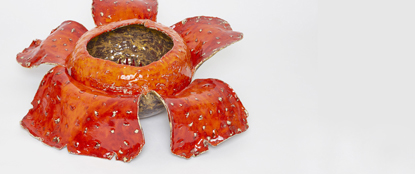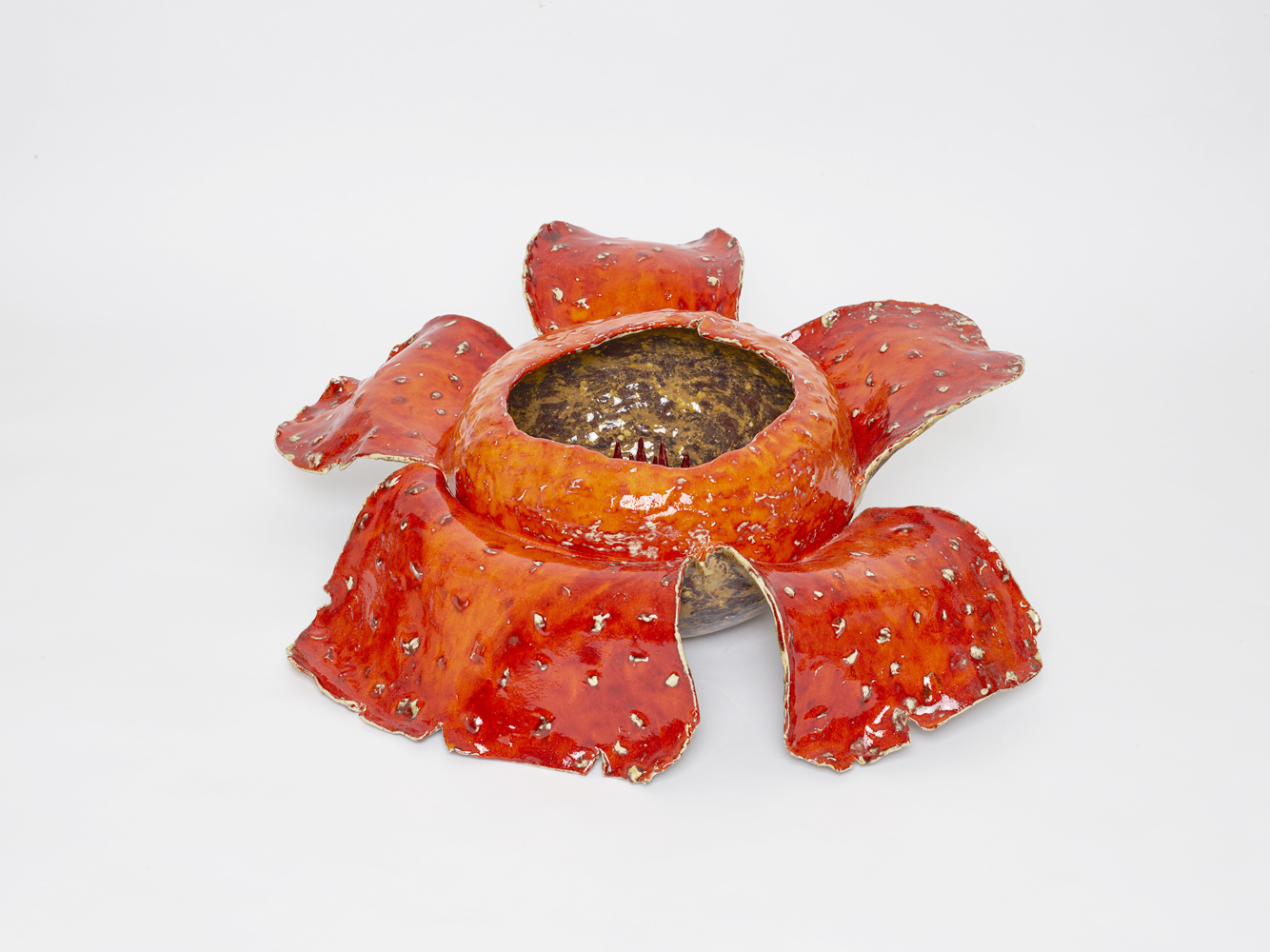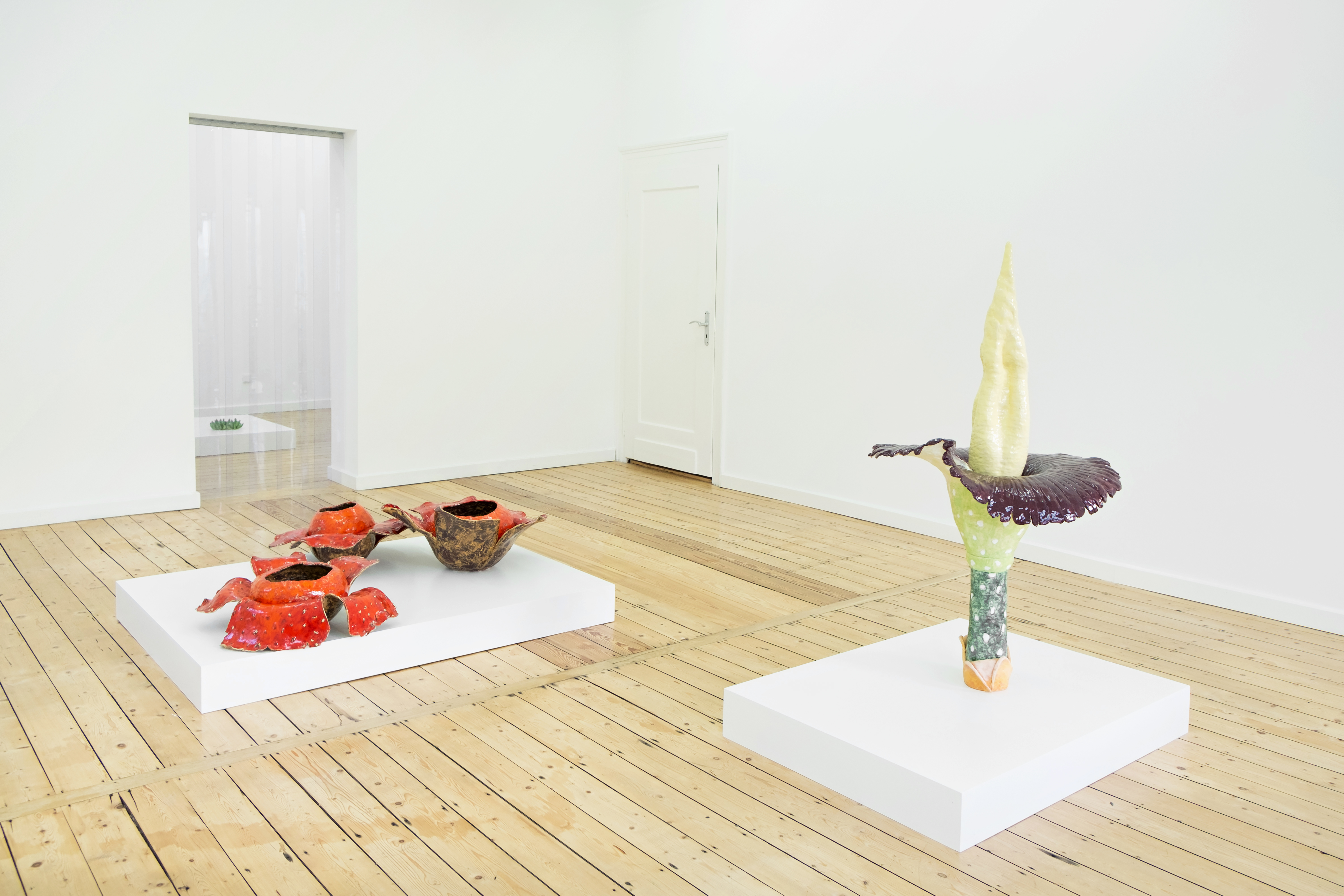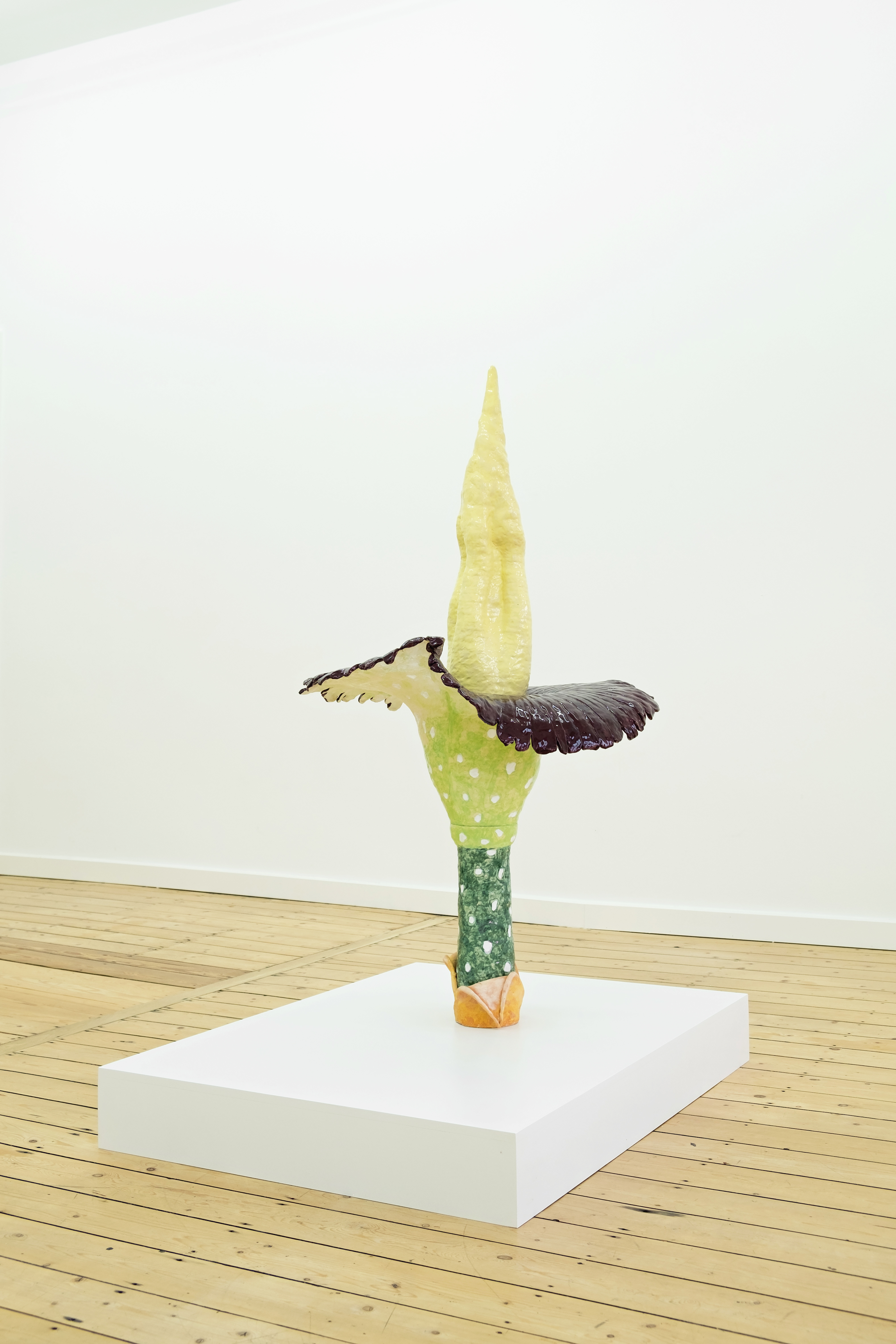The life-size ceramic replicas show various blossoms of so-called Corpse Flowers, i.e. flowers, which attract insects for pollination with their intensive odor. These plants imitate the odor and with their fleshy petals also the appearance of carcasses. By imitating the phenotype of these carrion flowers with artistic means, Gerrit Frohne-Brinkmann creates a situation of double mimicry: the sculptures adopt the deceptive maneuver of the plants. In combination with the short life of the actual flowers and their opulence, which is reminiscent of the Baroque, they become a vanitas motif that puts them in the border zone between life and death. The artist transforms this short, transient state of the blossoms into permanent ceramic sculptures, but at the same time creates an extreme contrast to these enduring sculptures by embedding a volatile olfactory stimulus into the installation. By appropriating the performative gesture of the plant world, Frohne-Brinkmann’s sculptures become actors, that attract and repell the visitors at the same time, which, to a certain degree, reverses the relationship between passive sculptures and the visitors as their acting counterparts.
The special scent of the natural flowers primarily exerts a great attraction on some fly and beetle species, on which the plants are dependent for the pollination. But the flowers are at least as attractive on tourist hosts. The Amorphophallus titanum, which produces the largest unbranched inflorescence and is therefore considered the largest flower of the plant kingdom, attracts visitors all over the world to the greenhouses of botanical gardens, but also to the rainforests of its homeland Sumatra during its flowering period which lasts only about three days. Rafflesia arnoldii produces the largest individual flower on earth that lasts less than a week. Therefore it is visited by many tourists in its natural habitat in Indonesia, but replicas are also found in natural history museums like the Senckenberg Museum in Frankfurt due to its record size.. These botanical extremes lead to a sensationalism, which turns the flowering of the carrion flowers into an event through additional staging. This emphasis of the spectacle character forms a parallel of Corpse Flowers to Gerrit Frohne-Brinkmann‘s recent work, in which he combines archaic forms of life or natural phenomena with elements of the amusement and entertainment industry, especially with forms of staging, such as in movies, magic, and entertainment shows. Gerrit Frohne-Brinkmann takes these forms of production and transfers them to the exhibition space, where he imitates them, but at the same time also playfully reveals and accentuates them.
Gerrit Frohne-Brinkmann (*1990, Friesoythe) studied at the Hamburg University of Fine Arts with Andreas Slominski and Ceal Floyer. Most recently, his works were shown in the exhibition on the VG Fellowship 2017 at the Kestner Gesellschaft Hannover and in the solo show WE HAVE A T-REX at the Artothek in Cologne. He lives and works in Hamburg.
Gerrit Frohne-Brinkmann is the tenth scholarship holder of the scholarship Follow Fluxus – after Fluxus, initiated by the state capital of Wiesbaden and the Nassauischer Kunstverein Wiesbaden. He was nominated by Bettina Steinbrügge, director of the Kunstverein in Hamburg, and Dr. Yilmaz Dziewior, Director of the Museum Ludwig Cologne, for the highly dubbed Wiesbaden scholarship. Since 2008 Follow Fluxus – after Fluxus supports young international artists whose work suggests ideas inherent to the Fluxus art movement in order to further develop the movement. The endowment of 10,000 Euro is provided annually for a three month residency in Wiesbaden. The work stipend concludes with a solo show of the artist’s created work in the same year.
The jury of five persons consisted of Simone Neuenschwander (Director, Kunstvereins Nürnberg – Albrecht Dürer Gesellschaft), Christian Jankowski (Concept Artist and Professor for Fine Arts at the Staatlichen Akademie der Bildenden Künste Stuttgart, Curator of the Manifesta 11, 2016), Michael Berger (Collection Berger, Wiesbaden), Dr. Isolde Schmidt (Cultural Department of the city of Wiesbaden) and Elke Gruhn (Chairwoman, Artistic Director and Curator, Nassauischer Kunstverein Wiesbaden). Gerrit Fohne-Brinkmann was proposed by Bettina Steinbrügge, Director of the Kunstverein in Hamburg, and Dr. Yilmaz Dziewior, Director of the Museum Ludwig Köln, for the grant. The jury chose from 57 nominations.
The previous awardees of the scholarship Follow Fluxus were Emily Wardill (United Kingdom), Jimmy Robert (Guadeloupe), Aslı Sungu (Turkey), Kateřina Šedá (Czech Republic), Stefan Burger (Switzerland), Annette Krauss (Netherlands), Taro Izumi (Japan), Mehreen Murtaza (Pakistan) und Adriana Lara (Mexico).







